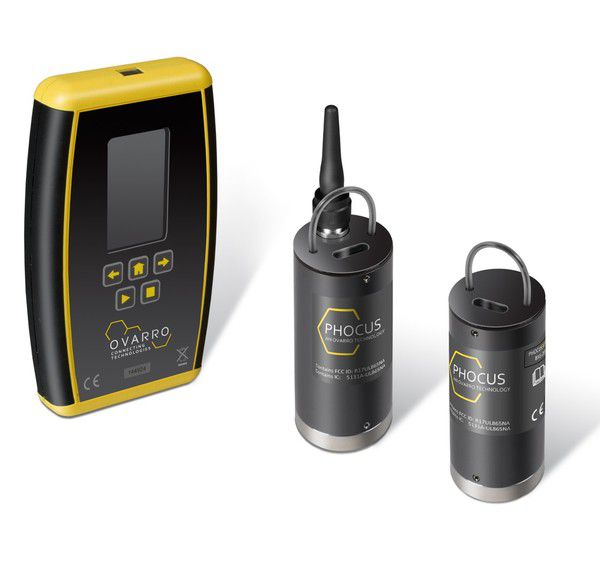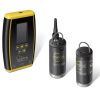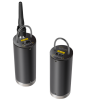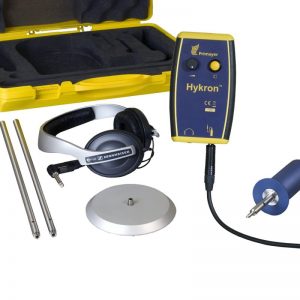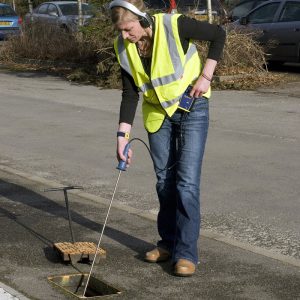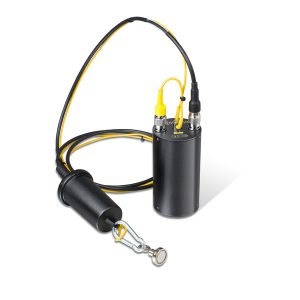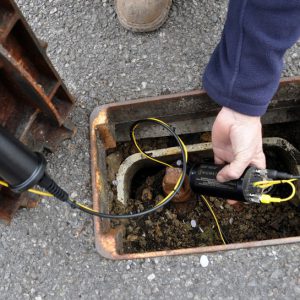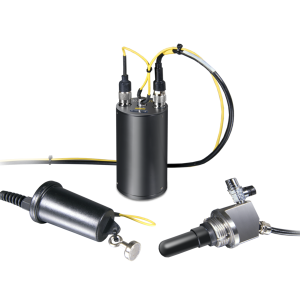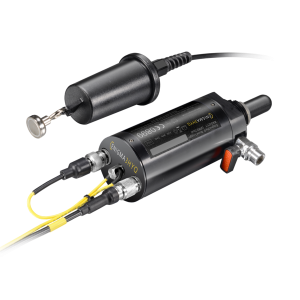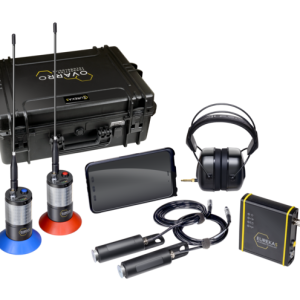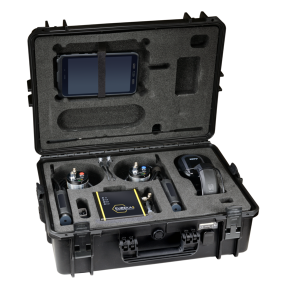Description
Overview
Phocus3 is an advanced leak noise logger designed for detecting and localising water leakage. Wireless communications allows both ‘lift and shift’ or permanent distribution network operation. On site leakage results may be obtained via the Communications Module with detailed analysis carried out on the host software.
-
- Logger Characteristics
- Two models available
- infra-red (IR) contact – lift and shift operations
- radio contact – greater communications range
- Smallest size – IR contact model 40×113 mm (including handle)
- Integral accelerometer with high sensitivity
- Intelligence in logger to determine presence and level of leak noise
- Data memory approximately one year in most situations
- Battery life >5 years (dependent on usage)
- Submersible to IP68
Operations
Phocus3 is an intelligent acoustic logger which detects the noise generated by a water leak. The logger samples pipeline noise at one second intervals during each of three sample epochs during the night when background acoustic noise is lowest. It carries out statistical analysis on each of the three epochs to determine the Leakage Confidence Factor. The lowest leak noise amplitude is also measured. This value is important as a measure of how close to the leak the logger is situated.
ภาพรวม
Phocus3 เป็นอุปกรณ์บันทึกเสียงท่อรั่ว (advanced leak noise logger) ที่ได้รับการออกแบบมาเพื่อใช้ในการตรวจหาและจำกัดพื้นที่ในการหาท่อรั่วให้ แคบลง (detecting and localizing) โดยใช้การสื่อสารแบบไร้สาย (Wireless communications) ซึ่งทำให้สามารถโยกย้ายไปติดตั้งตามตำแหน่งต่างๆ (lift and shift) หรืออาจติดตั้งแบบถาวร ในระบบท่อจ่ายน้ำได้สะดวก สามารถวิเคราะห์ผลภาคสนามเบื้องต้นได้โดยผ่าน Communications Module และวิเคราะห์ในรายละเอียดต่อไปโดยใช้ Computer software
คุณลักษณะของอุปกรณ์
-
- มีให้เลือก 2 แบบ
- แบบสื่อสารด้วยอินฟราเรด สามารถเคลื่อนย้ายไปติดตั้งตามตำแหน่งต่างๆ ได้สะดวก (infra-red (IR) contact – lift and shift operations)
- แบบสื่อสารด้วยคลื่นวิทยุ (radio contact – greater communications range)
- ขนาดที่เล็ดที่สุด คือแบบ IR contact 40×113 มม. (รวมมือจับ)
- มี accelerometer ที่มีความไวสูง (high sensitivity)
- เป็นอุปกรณ์บันทึกเสียงอัจฉริยะที่สามารถระบุว่าใช่เสียงของท่อรั่วหรือไม่และระดับความดังของเสียงเป็นเท่าใด
- หน่วยความจำในการเก็บข้อมูลประมาณ 1 ปี
- อายุการใช้งานของแบตเตอรีประมาณ 5 ปี (ขึ้นอยู่กับการใช้งาน)
- สามารถจมน้ำได้ที่ระดับการป้องกัน IP68
หลักการทำงาน
Phocus3 เป็นอุปกรณ์บันทึกเสียงอัจฉริยะ ที่ใช้ตรวจหาเสียงที่เกิดจากน้ำรั่ว โดยอุปกรณ์จะทำการเก็บตัวอย่างเสียง 3 ค่า ในช่วงเวลากลางคืนซึ่งเป็นช่วงเวลาที่มีเสียงรบกวนจากสภาพแวดล้อมภายนอก (Background noise) น้อยที่สุด โดยแต่ละค่าจะใช้เวลาในการบันทึกเสียง 1 วินาที หลังจากนั้นจะวิเคราะห์หาค่า Leakage Confidence Factor (LCF) โดยใช้หลักการทางสถิติ แอมพลิจูดของเสียงรั่วที่ต่ำที่สุดก็จะถูกวัดไว้ด้วย เนื่องจากจะสามารถช่วยให้ประเมินได้ว่าจุดรั่วนั้นอยู่ใกล้หรือไกลจากอุปกรณ์ที่ติดตั้งมากน้อยเพียงใด

